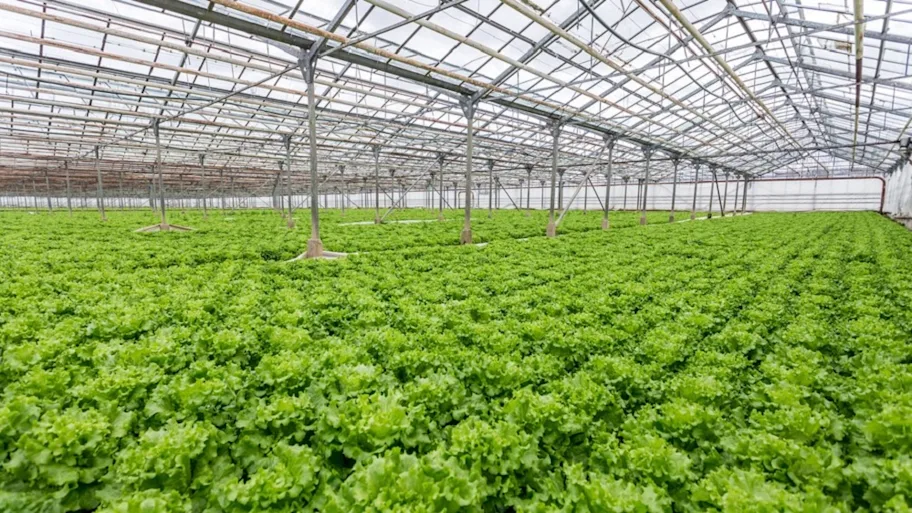
- Science news
- Environment
- Farmers will benefit from a new method of monitoring pasture nutrients
Farmers will benefit from a new method of monitoring pasture nutrients

Changes in pasture nutrients over the growing season are not typically monitored but doing so may help farmers make best use of this natural resource. Image: Shutterstock
Over-grazing pasture to below 7 cm lowers digestibility and protein levels, reveals a new cheap and easy method for regular monitoring of nutrients in grasslands
— By Tania Fitzgeorge-Balfour, science writer
A fast new way of checking nutrient levels in grasslands allows farmers to quickly monitor changes in pasture nutrients and adapt their animals’ grazing methods accordingly. By cutting the analysis time from around 16 hours to less than a minute, this relatively cheap and easy approach will greatly improve the sustainable management of grasslands — the main form of agriculture in many parts of the world, and a cheap and affordable source of nutrients for ruminant livestock that in turn provide meat and milk for people. Using this new method, researchers publishing in Frontiers in Sustainable Food Systems show that overgrazing pasture to below 7cm significantly reduces the amount protein and digestibility of the grassland.
The Use of Mobile Near-Infrared Spectroscopy for Real-Time Pasture Management► Read original article► Download original article (pdf)
“Real-time nutrient monitoring can provide a more timely and adaptive pasture management than is currently feasible for farmers and should lead to productivity gain,” says Matt Bell, lead author of this study and Assistant Professor at the School of Biosciences, University of Nottingham, UK. “Using this new method of checking nutrient levels, we show that over-grazing or over-harvesting pastures will significantly reduce protein levels and its digestibility, which will be detrimental to the productivity of the land.”
In many parts of the world, grassland is the dominant form of agriculture and it is also one of the largest ecosystems, covering around 40% of land on Earth. Changes in pasture nutrients over the growing season are not typically monitored but doing so may help farmers make best use of this natural resource. Bell and his team of colleagues at Nottingham University recognized this problem and have been working on a solution.
He explains, “Grass provides a cheap and affordable source of nutrients for ruminant livestock, which in turn produce milk and meat for humans. To manage pasture most effectively, we need a tool for frequently monitoring pastures across fields and over a spring/summer growing period that is quicker, easier and cheaper than traditional laboratory methods. To do this, we calibrated a handheld near-infrared spectroscopy (NIRS) device to measure nutrients in pasture.”
This process involved the comparison of pasture nutrient levels obtained by traditional laboratory methods, which require the use of large specialized equipment, to the readings given by the relatively quick and simple hand-held NIRS device. The NIRS technique measures the spectrum of energy reflected from a sample illuminated by white light, providing information on different nutrient levels. It reduces the time taken for analysis from around 16 hours to less than a minute.
Using this new method, Luca Mereu, co-author of this research on an Erasmus Internship in the UK from Italy, collected samples at the University of Nottingham farm to assess changes in pasture nutrients and the factors that may have caused these changes. The results showed that a decline in the height and cover of pasture were associated with lower digestibility and reduced concentrations of protein.
“Intensively grazed pastures should avoid going below a height of 7cm, otherwise nutrient intake by the animals will be limited. Below this height the composition of the grass is more stem and residual plant material than vegetative plant material,” explains Bell.
He continues, “Our study confirms that this new hand-held NIRS technology can be used to inform better grassland management decision making and the utilization of pastures for sustainable production.”
This new approach to nutrient monitoring will also lead to exciting new areas of research.
Bell explains, “We wish to investigate other factors potentially influencing changes in pasture nutrients such as botanical composition, different grazing animals and variability within a day. This may help farmers to decide the optimum timing for grazing by sheep and cattle, as well as silage management.”
Original article: The Use of Mobile Near-Infrared Spectroscopy for Real-Time Pasture Management
REPUBLISHING GUIDELINES: Open access and sharing research is part of Frontiers’ mission. Unless otherwise noted, you can republish articles posted in the Frontiers news blog — as long as you include a link back to the original research. Selling the articles is not allowed.






